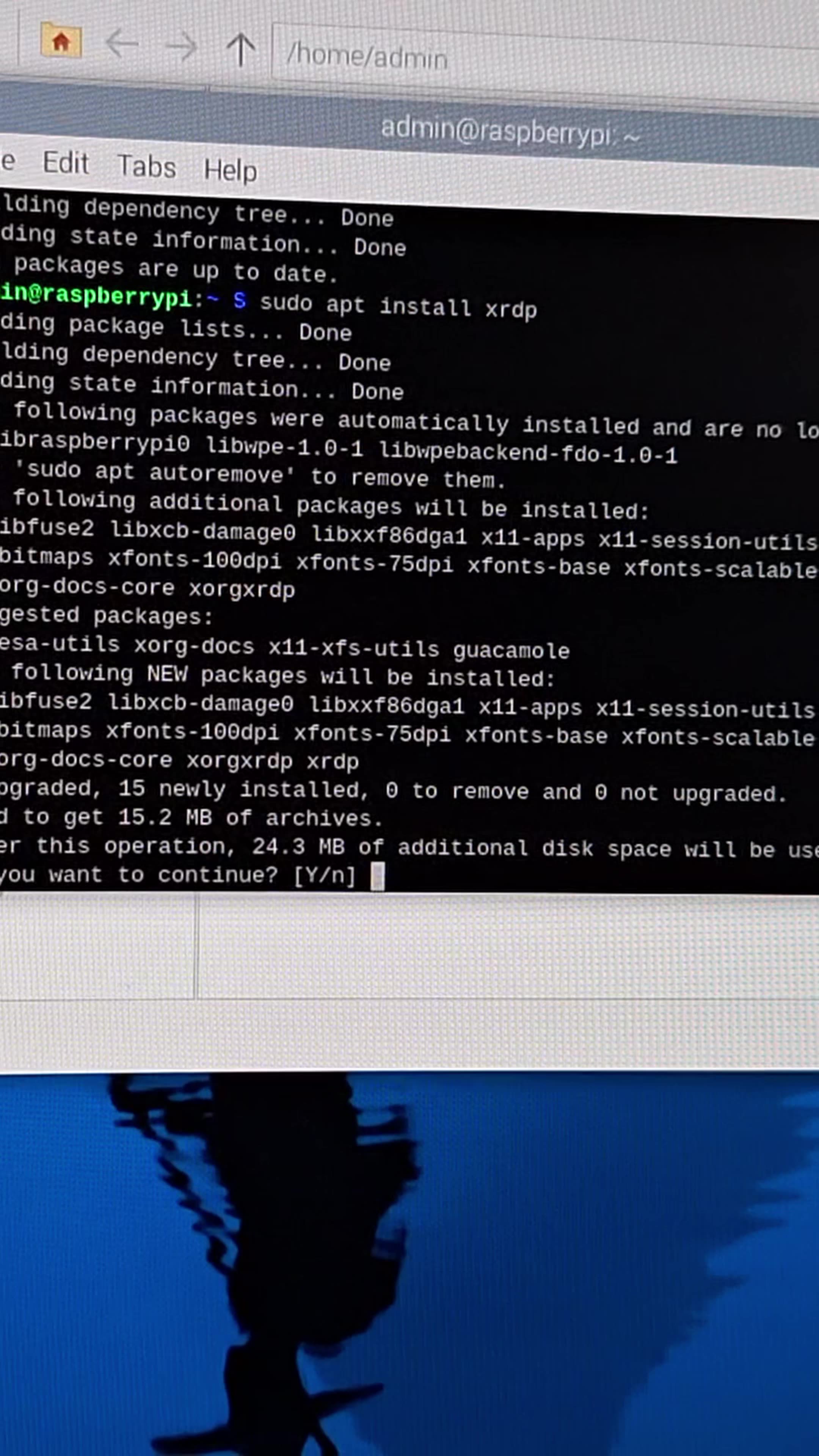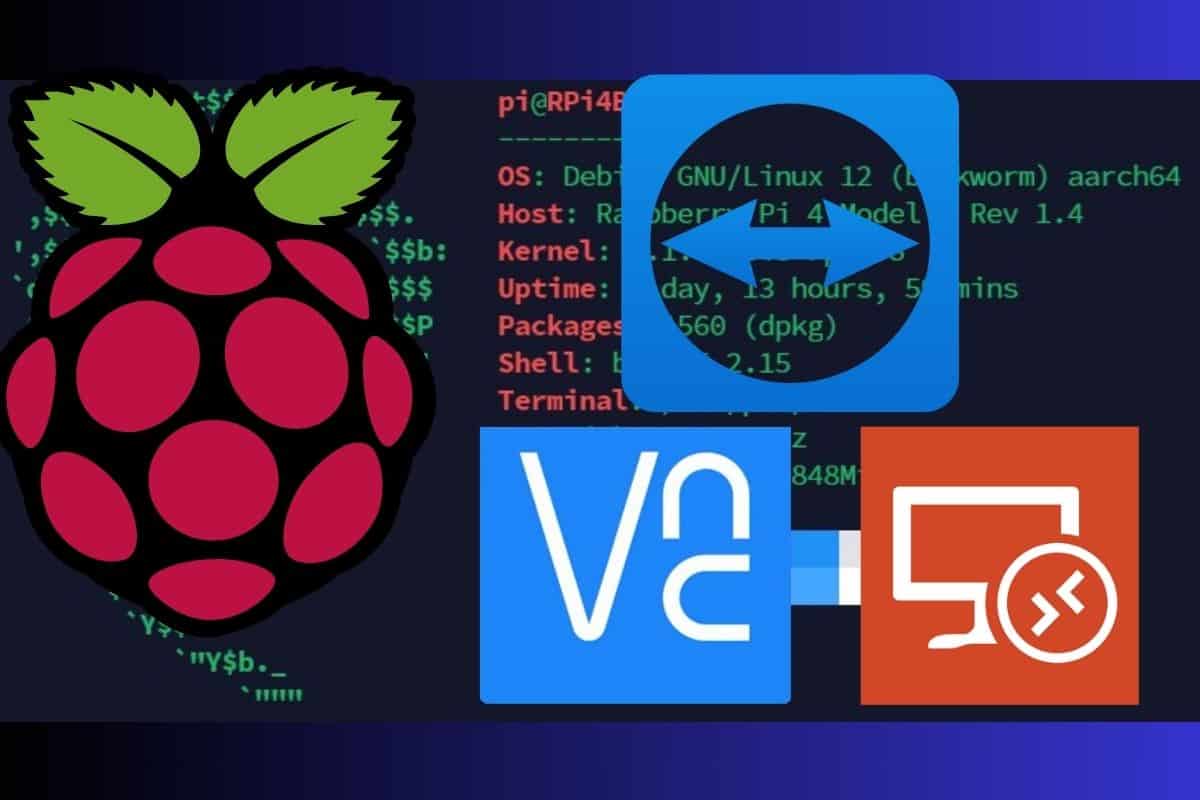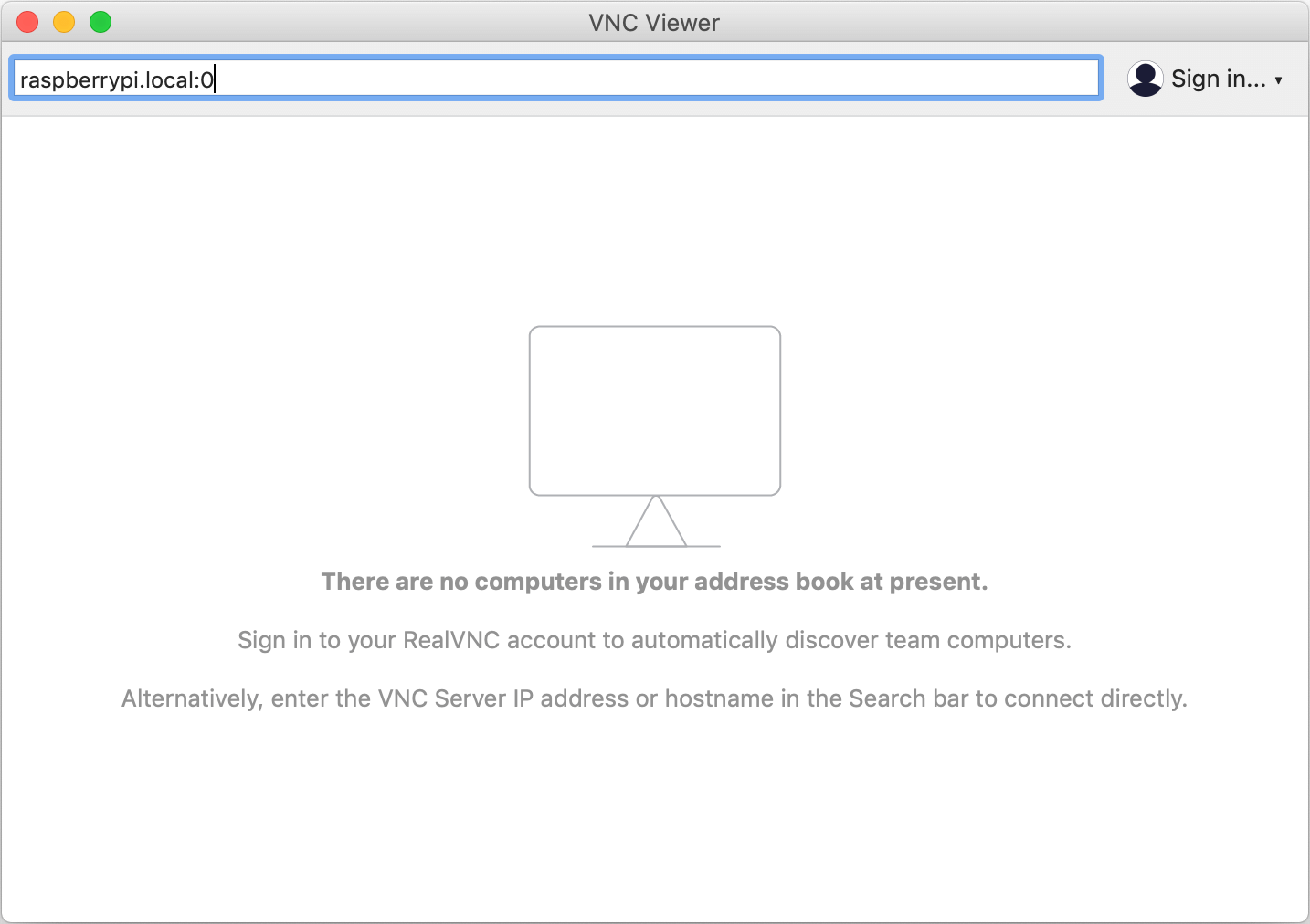Remote Access Raspberry Pi From Internet - Your Guide
Do you ever wish you could get to your Raspberry Pi computer from any spot on the planet? It's a pretty common thought, as a matter of fact, wanting to work on your little computer projects even when you're far from home, or maybe just needing to sort out a small issue, or perhaps grab a file you left behind. This tiny machine really does give you the freedom to link up over the internet from just about any device, which is quite useful.
People who use these small computers often ask about getting to them from afar. It makes a lot of sense, too, since these little devices are quite good for setting up in places where you might not always be around. Having that ability to check in and manage things without being right there, it just opens up so many possibilities, you know?
There are, actually, many different paths you can take to make this connection happen. Some of these ways are quite direct, others might need a few more adjustments, but they all help you control your little computer from a distance. We'll explore some of the most common and effective ways to do this, so you can pick the one that fits your needs best.
- Lyn Elizabeth Caviezel
- Jimmy Kimmel Salary
- Camilla Araujo Uncensored Videos
- Paula Dean
- Luis Marcel Barrios Jr Dad
Table of Contents
- Ever Wondered How to Reach Your Pi from Anywhere?
- Common Ways to Get Remote Access Raspberry Pi from Internet
- How Do You Connect Your Pi from the Internet?
- Keeping Your Remote Access Raspberry Pi from Internet Safe
- What Makes the Pi Good for Remote Access Raspberry Pi from Internet?
Ever Wondered How to Reach Your Pi from Anywhere?
It's a pretty neat idea, isn't it, having your Raspberry Pi ready for you no matter if you're across town or across the globe? This desire to work on your little computer projects even when you're not physically next to it is very common. Maybe you're at a coffee shop and remember a file you need from your Pi at home, or perhaps a small issue comes up with a setup you have running, and you wish you could just fix it right then and there. This kind of freedom, to get to your Raspberry Pi from just about any device that has an internet link, is what makes this topic so interesting to many people, you know?
The flexibility a remote connection offers is pretty big. You can keep an eye on things, make changes, or just pull up information whenever you need it, which is quite convenient. It's about making your small computer work for you, even when you're far away. So, if you've ever thought about how handy it would be to have your Pi always within reach, then you're on the right track, basically. This is exactly what we're talking about when we discuss getting to your Raspberry Pi from a distance over the internet.
Common Ways to Get Remote Access Raspberry Pi from Internet
There are, as a matter of fact, several ways people often choose to get to their Raspberry Pi from a distance. Some of these are quite well-known, like using tools such as TeamViewer, VNC, or XRDP. These sorts of options can definitely help you control your Raspberry Pi over the internet. You might need to do a few extra setup steps to get them working from anywhere you happen to be, but it's certainly something you can achieve. It's really about picking the method that feels most comfortable for you and what you're trying to do with your small computer, you know?
When you want to control your Raspberry Pi from a distance using any device connected to the internet, you have some good choices. The folks who work with Raspberry Pi have, in a way, come up with some clever ideas to make this simpler. For instance, there's a particular solution that lets you link up to your Raspberry Pi desktop and even its command line directly from a web browser, which is pretty neat. This makes it quite simple to get things done without needing special software on the device you're using to connect, which is very handy.
What is Raspberry Pi Connect for Remote Access Raspberry Pi from Internet?
One of the more straightforward ways to get to your Pi is through something called Raspberry Pi Connect. This is, basically, a secure way to reach your Raspberry Pi OS. It lets you connect to your Pi's desktop view and even its command line, all from inside your web browser. This means you don't need to install specific programs on the computer or phone you're using to connect, which is a big plus for many people, you know? It's a pretty innovative idea that makes things a lot easier.
With Raspberry Pi Connect, you can directly get to your Pi just by opening a web page. It's set up to be a simple and secure solution for managing your Raspberry Pi from far away. If you're looking into this, there are helpful guides that can walk you through anything related to Raspberry Pi Connect, including how to put it on your system, get it ready, or answer any other questions you might have about using it for remote access Raspberry Pi from internet. It really does simplify the process quite a bit, so.
Exploring Terminal Access for Remote Access Raspberry Pi from Internet
If you're someone who likes to work with text commands, then getting remote terminal access to your Raspberry Pi is probably what you're looking for. This way of connecting lets you type commands directly into your Pi, just as if you were sitting right in front of it. It's a very common way for people to manage their small computers, especially for tasks that don't need a full graphical screen, you know?
The most common method for this kind of remote access is called SSH, which stands for Secure Shell. SSH gives you a safe way to get to a terminal session on your Raspberry Pi. It means that whatever you type and whatever the Pi sends back is kept private and safe from prying eyes. This is, essentially, a go-to for many who want to control their Pi from a distance without all the visual stuff, just the commands. It's a direct line to your Pi's brain, in a way, for remote access Raspberry Pi from internet.
Getting Full Desktop Remote Access Raspberry Pi from Internet
For those who prefer to see everything on their Pi, just like they would if they had a monitor plugged in, getting a full desktop experience from a distance is quite possible. This means you get to see your Pi's graphical interface, open programs, and move your mouse around, all from another computer or even a phone. It opens up a whole bunch of possibilities for managing projects and doing administrative tasks from far away, you know?
The simplest way to get this full desktop view for remote access Raspberry Pi from internet is often by using VNC, which stands for Virtual Network Computing. VNC gives you a safe way to share your Raspberry Pi's desktop screen. It's actually included by default on Raspberry Pi OS, which makes getting started pretty easy. You can use it from just about any computer or smartphone, which is very convenient. Other good options for this kind of setup include NoMachine, TeamViewer, or RDP, all of which provide similar ways to see and control your Pi's screen from a distance.
How Do You Connect Your Pi from the Internet?
So, the big question is, how do you actually get to your Raspberry Pi over the internet? The most direct answer often involves something called port forwarding combined with dynamic DNS, or DDNS. This method basically tells your home internet router to send certain kinds of connections directly to your Raspberry Pi, even if your home's internet address changes from time to time. It's a way of making sure your Pi is always reachable from the outside world, so.
However, setting up port forwarding and DDNS can be a bit tricky for some people. There are, actually, even simpler ways that don't involve all those manual setup steps. Services like Ngrok, Dataplicity, or Tailscale can help you out here. These services create what are called "secure tunnels." Think of it like a private, safe pathway directly to your Raspberry Pi that goes through the internet without you having to mess with your router's settings. This makes getting remote access Raspberry Pi from internet much less of a headache for many, which is pretty nice.
Making Connections Easier for Remote Access Raspberry Pi from Internet
When it comes to making these connections easier, especially for remote access Raspberry Pi from internet, those tunneling services really shine. They basically handle the tricky parts for you, setting up that safe connection without you needing to worry about things like your home network's firewall or changing internet addresses. This means you can get your Pi up and running for remote use much quicker and with less fuss, you know? It's a popular choice for people who want simplicity.
Whether you go with the more hands-on approach of port forwarding and DDNS, or the simpler, managed services, the goal is the same: to make your Raspberry Pi available to you when you're not at home. It's about creating that link so you can send commands, view the desktop, or grab files whenever you need to, from pretty much anywhere. This flexibility is a big reason why so many people look into these kinds of solutions for their small computers, as a matter of fact.
Keeping Your Remote Access Raspberry Pi from Internet Safe
When you're letting your Raspberry Pi be reached from the wider internet, keeping things safe is a very important point. You definitely want to make sure that only you, or people you trust, can get to your little computer. There are many different ways to make sure your remote access is secure, and luckily, several common techniques help with this. It's all about making sure that the connection you set up is protected from others who might try to peek in or mess with your system, you know?
Many of the methods we've talked about, like SSH and VNC, come with built-in ways to keep your connection private. These methods use special ways of scrambling information so that it can't be easily read by others. This means that even if someone were to somehow get a hold of the data flowing between your device and your Pi, they wouldn't be able to make sense of it. This layer of protection is pretty important when you're dealing with anything connected to the internet, so.
Are There Secure Ways for Remote Access Raspberry Pi from Internet Without Extra Steps?
Yes, there are indeed ways to connect to your Raspberry Pi or other small internet-connected devices from a distance over the internet without having to deal with something like port forwarding. This is a big plus for many people who find those extra network steps a bit confusing. Methods like SSH, VNC, and RDP can be set up in ways that create a secure pathway directly to your Pi without needing to open up specific "ports" on your home router, which can sometimes feel a bit risky to people, you know?
These methods, especially when combined with services that create secure tunnels, mean that your connection is kept private and safe from the start. SSH, for example, gives you a secure way to get to a command line session. VNC provides a secure way to see your desktop screen from afar. And RDP offers another way to get that remote desktop view. All of these are built with safety in mind, making sure that your remote access Raspberry Pi from internet is as protected as it can be, which is very reassuring.
What Makes the Pi Good for Remote Access Raspberry Pi from Internet?
The Raspberry Pi has some characteristics that make it particularly well-suited for being controlled from a distance. One of the big things is its small size. It doesn't take up much room, which means you can place it almost anywhere, even in tight spots. This "small footprint" is pretty useful for setting up a device that you might not always be able to get to physically, you know? It can just sit there and do its job without getting in the way.
Another very important point is how little energy the Raspberry Pi uses. It doesn't need a lot of power to run, which means you can leave it on all the time without worrying too much about your electricity bill. This "low energy demand" makes it really good for situations where you want to deploy it somewhere and then just leave it running, knowing you can check in on it from afar whenever you need to. So, these qualities make getting remote access Raspberry Pi from internet a very practical choice for many different uses, basically.
To get your Raspberry Pi ready for remote access, all you really need is another computer or a smartphone, a local network connection for the Pi to begin with, and its local IP address. Once you have these basics sorted out, you're pretty much ready to set up your chosen method for reaching your Pi from anywhere with an internet connection. Just remember, your Raspberry Pi needs to stay powered on for you to be able to connect to it from a distance, obviously. But other than that, you're free to control it as needed.
This guide has touched on the main ideas for setting up a safe and steady connection to your Raspberry Pi from a distance. We've gone over how to get to your Pi's command line or its full desktop, whether you're connecting from within your own home network or from far away over the internet. There are many good solutions out there, and the goal is to help you pick the best way to keep your little computer within reach, no matter where you are.
- Geneen Wright
- How Much Does Jimmy Kimmel Make A Year
- Byddy Vs Byddf
- To Whom It No Longer Concern
- Jimmy Kimmel Salary

Remote Access Pi #raspberrypi #raspberrypi4 #raspberrypi5

3 Easy Ways to Access Your Pi Over the Internet Remotely – RaspberryTips

How to remotely access the Desktop of your Raspberry Pi over the